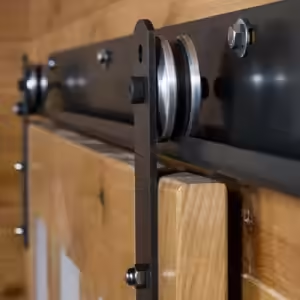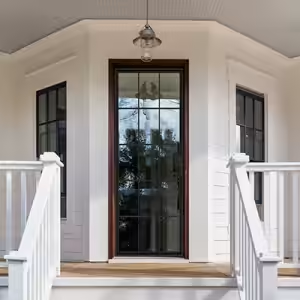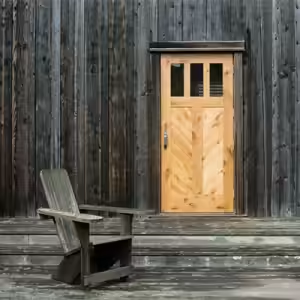However, not everybody shares our industry terminology. We often have people asking about "barn door hinges" when referring to a barn-style door on a hinge system (our Double X Interior Slab Door is a great example of this style). So, for the purposes of this article, we're going to go with the
Once you have your barn-style slab, you'll want to install the hinges to hang it in your door frame. This project can be accomplished by everyone from the seasoned DIYer to new homeowners.
How to Install Barn Door Hinges
- Gather Tools
- Measure
- Pre-Drill Holes
- Align Hinge
It’s always helpful to have an extra set of hands to help, but as you become more comfortable with the process, you’ll find that you’re able to install hinges on your interior and exterior doors with ease and confidence. The first step, of course, is to determine which style of door you would like to install. Though you might be quick to decide based solely on design and size, you will also need to review exactly which type of door requires hinges and which does not.
What Kind of Barn Door Requires Hinges?
As we mentioned before, in the Rustica world, barn door hinges aren't "a thing." But, as home renovation shows have featured barn doors in their designs, more and more homeowners are looking to incorporate the look within their own homes.In the home renovation world, there are many different door types, such as French doors, Dutch doors, exterior doors, and interior doors. So it makes sense that there are also different types of barn doors.
Barn doors have gained momentous popularity in recent years. Traditionally, people love them for their rustic, farmhouse look. These days, however, many people want to incorporate a barn door in their home for a variety of reasons, including aesthetics, practicality and function.
The Rustica barn door (a barn door on a sliding system) preserves space in smaller homes and provides a new innovative way of dividing up a floor plan. Though you might be entranced by the sleek look and bold sliding hardware, these particular doors do not require hinges. Instead, a homeowner needs to install sliding barn door hardware like a barn door track system, including a set of rollers and hangers that allow the door to slide left and right.
A barn-style hinged door is one that is crafted to look like a barn door, but doesn't function like one. Instead, it requires swinging hinges like your more traditional interior door.
Types of Barn Door Hinges
Choosing a barn door hinge depends on three main things: load, material, and type of hinge.Load: When considering the door’s load, you need to think about the weight of the door slab itself and if anything additional will be hanging from it. Heavier doors require hinges that are marked as heavy duty, which will be made clear on the website you are ordering from or on the packaging at the store.
Material: Common hinge material options include steel, stainless steel, brass, aluminum, and plastic. Many of these can be kept as is or painted and stained to your decor preference and color scheme. Choosing the appropriate material involves design choice as well as considering the need for longevity if your barn door is exterior. Stainless steel and brass are frequently chosen for exterior hinges since they’re structure is extremely durable and can outlast both weather and time. Of course, other options exist as well so make sure to do some research.
Hinge: The type of hinge could be considered one of the more complex categories to navigate. There are so many types of hinges used for everything from cabinets to entryways! When reviewing barn door hinges that will be placed on your garage door, front door, patio, or interior spaces, there are three main popular choices. The options below will get you started on deciding which swinging door hinge is best for your exterior or interior barn door.
- Butt hinges: A durable and permanent option used on both exterior and interior doors. A butt hinge is crafted from two identical metal plates that are connected by a pin and barrel system. One plate is attached to the interior side of the door and the other is drilled into the door jamb. When properly installed, usually only the pin and barrel is exposed when the door is closed, preserving the door’s face. Alternatively, a dummy strap can be installed across the face to provide a bit more character to the door and to mimic some of the more traditional aesthetics. This is common for homeowners who install gate hinges and want to create a bit of curb appeal in the front of their property.
- Strap Hinges: These hinges are named after their strap-like shape and are very common for barn doors, especially carriage house doors. Carriage doors traditionally graced the front of carriage houses, but they are now frequently used on garages, our modern version of a carriage house. These barn door strap hinges vary in load-bearing ability, length, and material. You’ll need to determine which length, material, and load-bearing ability is best for your door. As far as material is concerned, the most common is iron. Iron strap hinges stand out beautifully against rustic or reclaimed wood barn doors.
- Tee hinges: Also known as T-Hinges. Like a strap hinge, these hinges are likewise named after their T shape. Best defined as a combination of a strap hinge paired with a butt hinge, these hinges take on a horizontal t-shape when a door is closed. Tee hinges are also used on gates and carriage garage doors but can also be used in interior spaces as well. The difference between a strap hinge and a tee hinge is purely aesthetic. Both are excellent, durable options.

 800-891-8312
800-891-8312




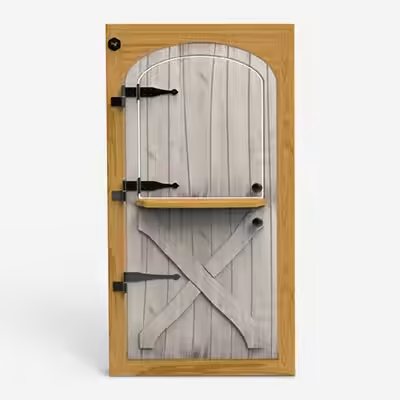

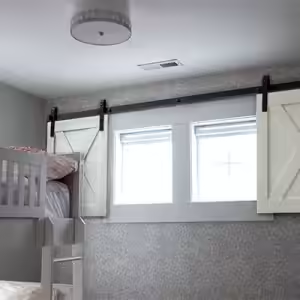


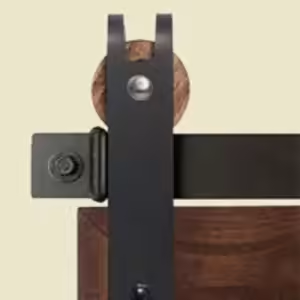

-1601395521090.avif)
